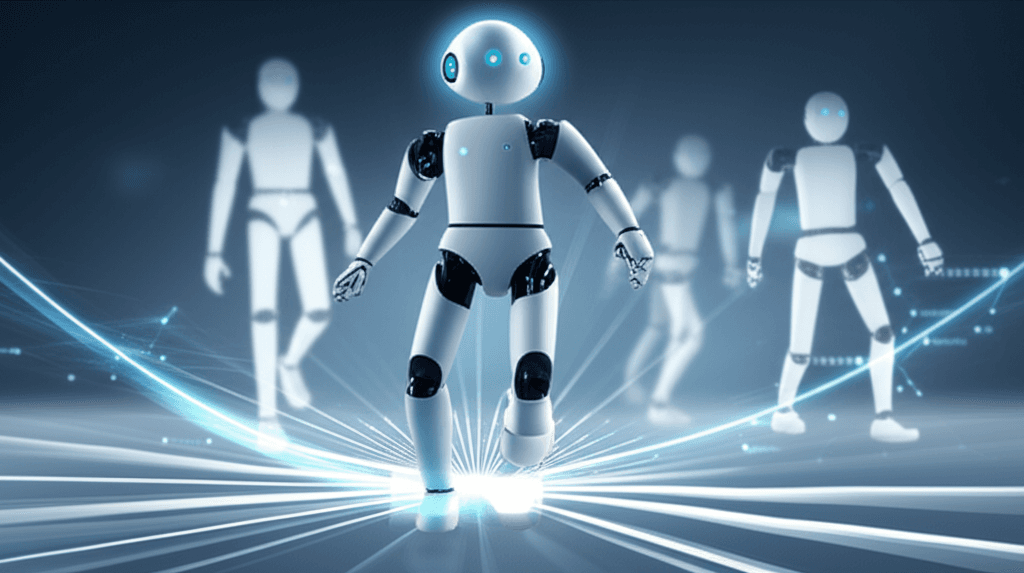Unitree Unveils $5,900 Robot, Democratizing Humanoid AI Development
Unitree's sub-$6,000 R1 disrupts the robotics market, accelerating innovation and the path to widespread personal humanoids.
July 30, 2025

In a move poised to reshape the landscape of artificial intelligence and robotics, Chinese firm Unitree has unveiled its R1 humanoid robot at a startlingly low price of $5,900.[1][2] This price point dramatically undercuts the projected costs of competitors from prominent American companies like Tesla, Figure AI, and Apptronik, heralding a potential new era of accessible and widespread humanoid robotics.[3][4] The introduction of the R1 is not merely a product launch; it represents a significant disruption that could accelerate research, development, and the eventual mass adoption of humanoid robots in various sectors by making the technology available to a much broader audience of developers, researchers, and early adopters.[1][5][4]
The Unitree R1, marketed as "born for sport," is an agile machine standing just under four feet tall (1.2 meters) and weighing approximately 55 pounds (25 kg).[6][1][2] Its capabilities, showcased in promotional videos, include impressive athletic feats such as cartwheels, handstands, boxing moves, and running downhill, all powered by 26 articulated joints.[6][7][2] The robot is integrated with a multimodal large language model, enabling it to process both voice and visual information through its camera, microphones, and speakers.[6][8] This allows for interaction and the potential to handle complex tasks.[7][9] The standard R1 model, however, comes with fixed fists, lacking the dexterous hands required for fine manipulation tasks like folding laundry or washing dishes.[1][10] An educational "EDU" version offers the option to add dexterous hands, but at a significant additional cost.[1] The robot's relatively short one-hour battery life and its current design suggest its immediate utility is geared more towards research, education, and development rather than as a fully functional household or industrial assistant out of the box.[1][5]
The strategic pricing of the R1 is a direct consequence of Unitree's vertical integration and manufacturing approach.[6][4] The Hangzhou-based company develops and produces core components like motors and reducers in-house, leveraging years of experience in developing legged robots to optimize the body structure.[6] This, combined with China's extensive manufacturing ecosystem, allows for significant cost control, a key advantage in the burgeoning robotics market.[6][4] The R1 is considerably cheaper than Unitree's own previous models, the G1, which starts at $16,000, and the more advanced H1, priced around $90,000.[7][11] This aggressive pricing strategy sets a new benchmark in the industry and intensifies the competitive pressure on Western companies to reduce their own manufacturing costs.[3][2] The move is seen as a strategic effort to democratize robotics, opening the field to smaller labs, universities, and individual developers who were previously priced out.[4][12]
The R1's debut starkly contrasts with the pricing and development status of its primary competitors. Tesla's highly anticipated Optimus robot is projected to cost between $20,000 and $30,000, though CEO Elon Musk has suggested a long-term goal of under $20,000 once mass production is achieved.[7][13][14] Figure AI, which has garnered significant investment from tech giants like Microsoft, OpenAI, and Nvidia, is developing the Figure 02.[15][16] While a final price isn't set, estimates for their robots range from $30,000 to as high as $150,000, with a focus on addressing labor shortages in industries like manufacturing and logistics.[15][17][16] Apptronik's Apollo, another promising humanoid designed for work in warehouses and manufacturing plants, is expected to have a price tag below $50,000 once production scales.[3][18] These companies are focused on creating robots for real-world applications, with Apollo currently in pilot programs with Mercedes-Benz and Figure's robot being tested at a BMW facility.[3][2]
The unveiling of the sub-$6,000 R1 has significant implications for the future of the AI and robotics industries. By drastically lowering the barrier to entry, Unitree could spark a wave of innovation from a global community of developers and researchers.[4][12] This increased accessibility could accelerate the development of practical software and applications for humanoid robots, solving the "chicken and egg" problem where high hardware costs stifle software development. The immediate focus for R1 users will likely be on exploring its capabilities and pushing the boundaries of what a lightweight, agile, and affordable humanoid platform can achieve.[1][8] While the R1 in its current form is not a direct replacement for human labor in complex tasks, its existence signals a rapid maturation of the robotics market.[1][10] The long-term economic and social impacts of affordable, capable humanoids are profound, raising questions about the future of labor and the integration of autonomous systems into daily life.[3] For now, the R1 stands as a powerful symbol of a market on the cusp of a major transformation, where the science fiction concept of a personal robot companion is inching closer to an accessible reality.[8][4]
Sources
[1]
[5]
[7]
[8]
[10]
[11]
[12]
[13]
[14]
[15]
[16]
[17]